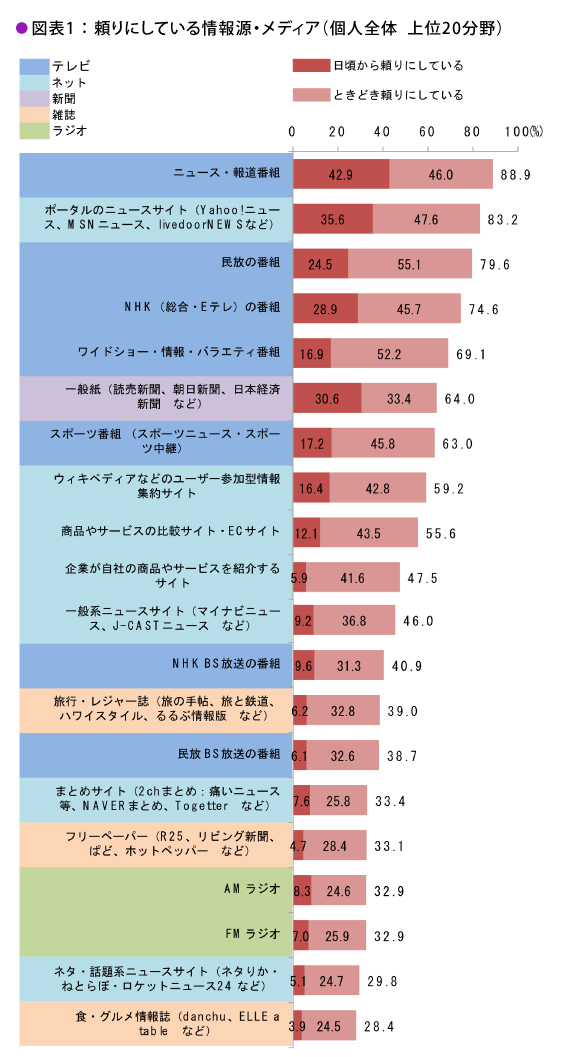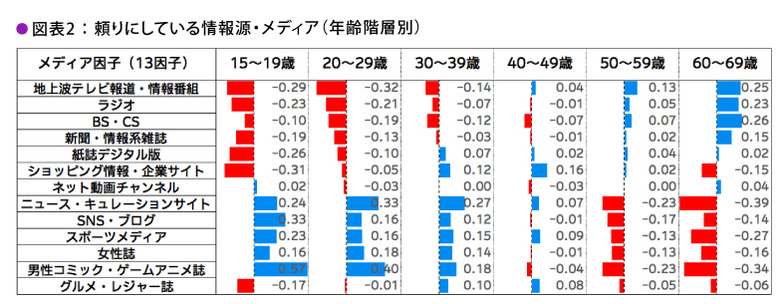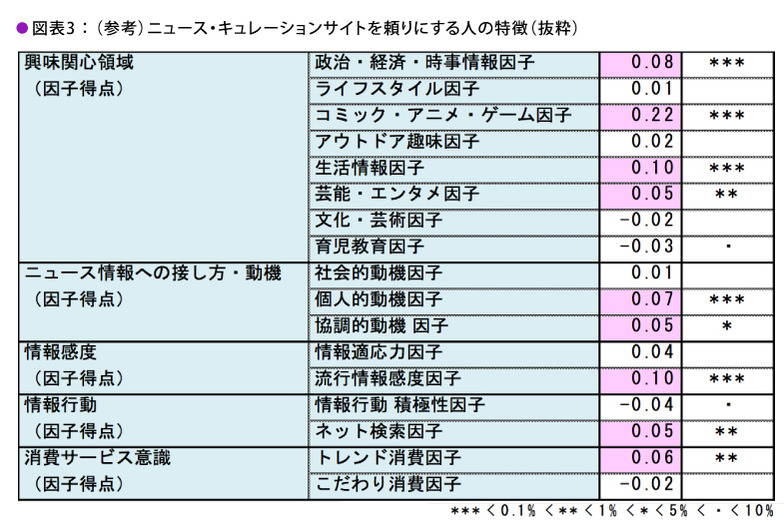■Online News in Full Bloom
In recent years, the proliferation of smartphones has created an information environment where people can connect to the internet anytime, anywhere. This situation has propelled us into an era where new information (news) can be obtained in real time from various sources, including social media.
Online media daily provide information across a wide range of genres, from politics and economics to dating advice. Portal site news has enjoyed unwavering popularity since the early days of internet adoption. Furthermore, in recent years, "curation media" has emerged. This type of media, often tailored for smartphone users, organizes diverse topics—both hard news and soft features—based on reader engagement predictions generated by high-performance computers, unconstrained by the traditional reporting priorities of established news outlets. Additionally, "summary sites" and other uniquely online media platforms have proliferated. These often rely on ordinary internet users to collect, organize, and present information about the evolving context surrounding specific news stories, incorporating online reaction comments. What direction are the media sources that people rely on for information heading?
Where are the media sources people rely on headed?
■ Various online media now rank high among "trusted sources"
In today's world, where news information is accessible anytime to suit a wide range of interests, what sources and media do people rely on in their daily lives?
We categorized various information sources and media—from television and newspapers to online news sites and personal blogs—into 71 types and examined how much people "rely on" them in their daily lives (Figure 1).

The graph shows the top 20 media sources with the highest percentage of respondents who particularly "rely on them" among 4,367 men and women aged 15 to 69 nationwide. While traditional media like TV and newspapers rank high, it's interesting to note that relatively new, popular online media (such as "summary sites" at 15th place and "trending news sites" at 19th place) are also consistently within the top 20.
■Younger Generations Rely Heavily on Online Sources ~ Differences by Age
When broken down by age group, online media gain even more prominence among those in their 20s. "Aggregator sites" rise to 7th place, "Trending/Topic-Based News Sites" climb to 13th, and "Curation Sites" also appear at 18th. It seems there are age-related differences in the news media people rely on.
Therefore, we analyzed the media by dividing them into 13 factors (Figure 2).
Respondents were asked how much they "rely on" each of 71 media types in their daily lives, and the responses were aggregated into the above 13 factors.
Each item is normalized so that the average for all respondents (ages 15-69) is 0.
Blue indicates a positive value. This means the percentage of people in that age group who regularly rely on that media is higher than the overall average.
Red indicates a negative value. This means the percentage of people in that age group who regularly rely on that media is lower than the overall average.
Blue bars indicate a higher proportion of respondents who answered they "regularly rely on" that media. "Terrestrial TV news/information programs," "Radio," "BS/CS," and "Newspapers/Information Magazines" show particularly strong support from middle-aged and older adults, centered on those in their 50s and 60s. In contrast, the two online media groups—"News Curation Sites" and "SNS/Blogs"—along with the three segmented media types—"Sports Media," "Women's Magazines," and "Men's Comic/Game/Anime Magazines"—are primarily supported by younger demographics from teens to those in their 30s.
Let's focus specifically on the "News Curation Sites" group. This category includes "Trending/Topic-Based News Sites," "Aggregator Sites," "General News Sites," and "Curation Sites." It's evident that support for this group is expanding across a broad age range, not just among those in their 20s, but also among those in their teens to 40s.
■What are the characteristics of people who rely on news curation sites?
What are the characteristics of people who score high on "news curation sites," primarily among younger generations? Figure 3 (called multiple regression analysis) shows the results, but it can be difficult to understand at a glance, so let's interpret it with some explanation.
Interest Areas Are Quite "Casual"
While interested in "Politics, Economy, Current Affairs," the strongest characteristic is their interest in "Comics, Anime, Games." Other notable interests include "Lifestyle Information" (including typical news like weather, traffic, incidents, accidents) and "Entertainment."
Approach to news and motivation: "Satisfying personal interests" and "Sharing topics with peers"
People who rely on news curation sites engage with daily news driven by "personal motivations" like enriching their own lives and hobbies, rather than "social motivations" such as wanting to participate in publicly discussed topics. Furthermore, "cooperative motivation" – seeking conversation topics to align with friends or colleagues – also plays a significant role.
Information behavior and consumption awareness strongly prioritize "trends" over "particular preferences"
Examining characteristics of information sensitivity, behavior, and consumption awareness reveals a strong expression of the sensibility seen in people who "read the air"—a concept gaining attention in recent years. While awareness of "trend information" and "trends" is strong, the aspect of demonstrating "particular preferences" in consumption appears weak.
Thus, it seems reasonable to conclude that people who rely on online news media in general approach information with motivations more akin to flipping through magazines focused on light topics related to daily life and hobbies—motivations similar to those when browsing such magazines to converse with friends—rather than motivations driven by a desire for deeply journalistic newspapers.
From a business perspective, the new online news media rapidly gaining popularity in recent years can be seen as successfully capturing these characteristics through their content lineups and information presentation systems. Consequently, they serve as a receptacle for many young people who hold a casual attitude toward information (in this sense, they also appear promising as advertising media).
■What will online news media look like in 10 years?
How will curation media and summary sites, which are currently expanding their role as media relied upon by younger generations, look in 10 years? Will they continue to accompany them as news sources when these younger generations mature and become central figures in society and their families?
While the exact form remains unclear, as more smartphone-native generations develop an interest in news media, it's certain that an increasing number of people will rely on online news sources.
A law lowering the voting age from 20 to 18 has been enacted. New media centered around the internet may also ignite the still-weak motivation among younger generations to seek out social and public news information. Perhaps in ten years, they will have grown into new comprehensive media platforms.
[Survey Overview]
● Survey Period: March 6 (Fri) to March 9 (Mon), 2015
●Survey Method: Online questionnaire survey
● Survey Participants: Men and women aged 15–69 nationwide (excluding high school students), allocated according to gender, age group, and residential area population ratios
●Valid Sample Size: 4,367
●Survey Implementation: Video Research Ltd.





